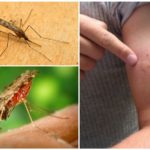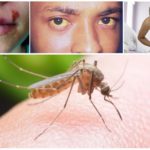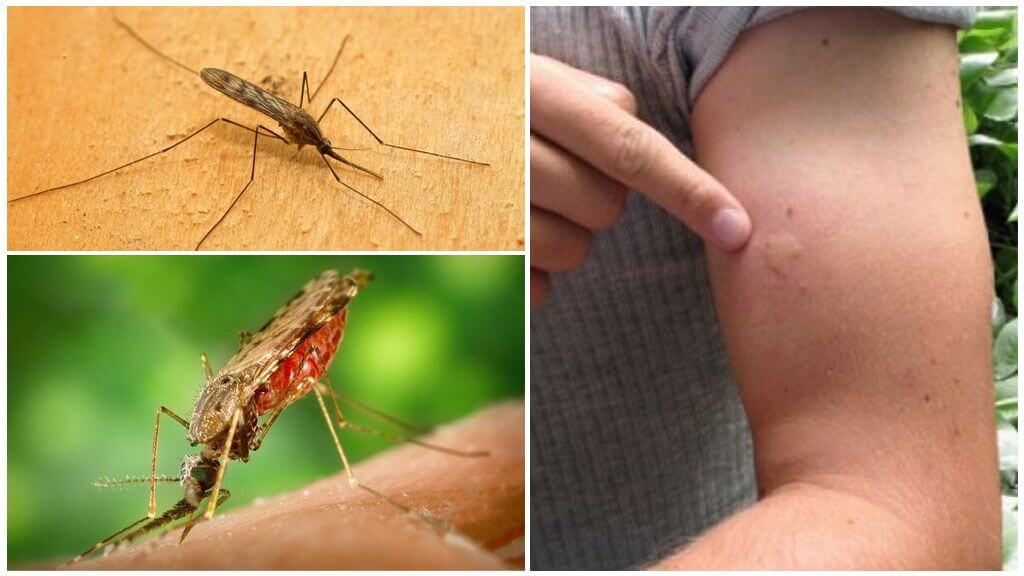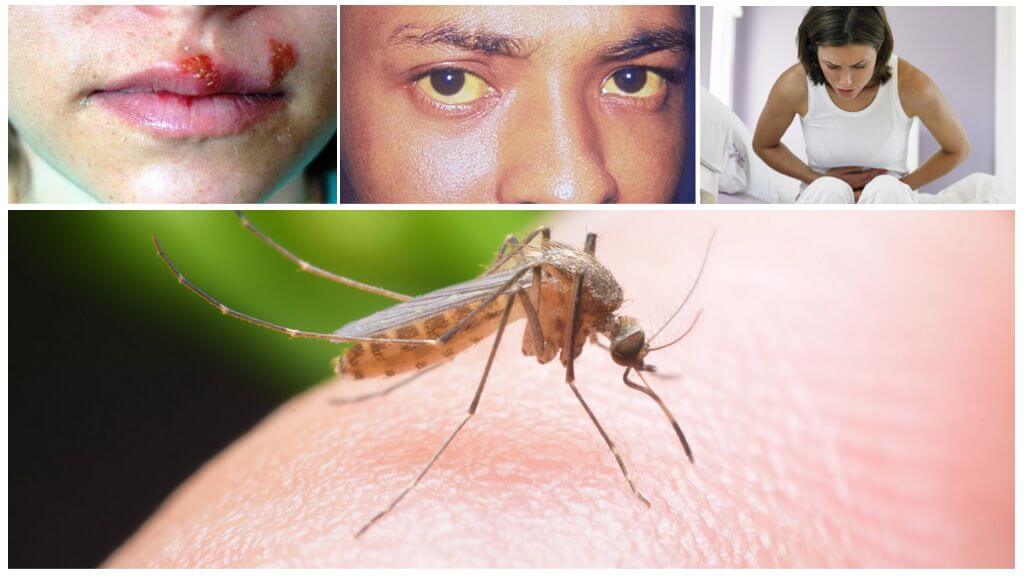What to do if you are bitten by an anopheles mosquito
Content
- Mosquito mosquito bite
- Possible effects of a mosquito bite
- Medications for Malaria Prevention
Mosquito bites very unpleasant sensations and subsequent irritation. But many people face them, and pay attention to each mosquito is impossible. But among the common blood-sucking insects, there is a special species, the scientific name of which is Anoféles, better known as anopheles mosquito. Its bite can cause serious damage to human health or even cause his death.
On a note!
The reason for this danger of a small insect is that it is a carrier of parasites - malaria plasmodia. Getting into the blood of the victim, they concentrate and multiply in the human liver and spleen, destroy them from the inside, reduce the body's immunity, thereby provoking the development of many dangerous diseases.
Signs of the Malaria Mosquito Bite
If the malaria mosquito bites, the person will not notice the difference and will perceive it as an attack of the usual bloodsucker. A slight tingling and redness of the skin accompanies the first hours after the attack of a dangerous malaria transporter. Then light appears itch, blister and edema. A picture of the bite of the Anopheles mosquito is presented below.
It is possible to distinguish the malaria mosquito from the usual by barely visible external signs. Anofeles raises his belly up while being bitten, while a simple mosquito keeps it parallel to the surface. Antennae of a malarial bloodsucker are longer than that of a common one. In size, both insect species are almost the same.
On a note!
People with hypersensitivity and prone to allergies after a bitenormal or malaria mosquito may occur severe swelling, skin rash, swollen lymph nodes. If insects are attacked in the face, it can eye swell.
The bite site may not be felt in a couple of days, and the victim will not suspect anything. The incubation period for malaria can last from 7 to 45 days from the moment of the bite. Before the manifestation of obvious signs of illness in a person in the first week after having bitten the anopheles mosquito, the following ailments may occur:
- weakness;
- apathy;
- pale skin;
- lack of appetite;
- nausea;
- pain in the abdomen;
- diarrhea;
- vomiting.
A victim of a malaria bloodsucker rarely pays attention to these signs, finding another explanation for them. At this time, the disease is already developing in the body and causes a destructive effect on the internal organs.
To facilitate well-being, you need to immediately process a mosquito bite alcohol solution and apply ice. The patient is recommended to drink plenty of fluids: strong tea and coffee. For warning allergic reaction to mosquito bites antihistamine should be taken - Suprastin, Tavegil, diphenhydramine.
Malaria Infection
A few days after being bitten by a malarial bloodsucker, a person's temperature suddenly increases. Such a sharp jump provokes severe headache and joint pain, noise in the ears, convulsions, dizziness, and increased sweating. Fever often replaced by chills. Such bouts of fever accompany the patient for 4-8 hours. Then comes a temporary improvement in well-being, which is replaced by a second attack.
There are several types of malaria:
- Three-day - attacks of fever accompanied by headache, articular, lower back pain are repeated every 48 hours. Ailments usually begin in the morning. The disease can occur in this mode for 2-3 years.
- Four-day - seizures are repeated every 3 days.
- Tropical - the most severe form of malaria. Duration of illness from 6 to 12 months. It is accompanied by severe fever and is most often fatal.
Important!
The course of any type of this disease depends on the state of human immunity. The most vulnerable victims of malaria are children under 5 and pregnant women.Their immune systems are not able to resist parasites. It is young children and future mothers who are at risk of being fatal.
In addition to malaria, anopheles mosquitoes are carriers of other dangerous diseases:
- anthrax;
- intestinal infections;
- "Elephant disease";
- yellow and tropical fever.
Distribution of the Malaria Mosquito
Malaria vectors live in warm countries with a humid climate. The largest number of insects occur in the third world countries: the southern part of Africa, Latin America, and Asia. In total there are more than 400 species of anopheles mosquitoes. In Russia, there are about 10 species of this bloodsucker. The main regions of mosquito distribution are:
- Krasnodar region;
- Caucasus;
- Western Siberia;
- European part of Russia.
Mosquitoes live and multiply in wetlands, standing water bodies. The northernmost region of the country where malaria mosquitoes occur is Karelia. Regions with a more severe climate are unsuitable for the life of bloodsuckers. In order to reduce the population of these dangerous insects in many countries, including ours, measures are being taken to drain the wetlands, monitor the sanitary situation in the regions, use special mosquito repellent.
Prevention and treatment of the disease
The easiest way to protect yourself from contracting the disease is to protect against bites. Before traveling to the forest or a regular walk in the park, you need to dress appropriately: close all body parts, clothes, hands and face as much as possible repellents. For going to nature there are special protective suit models.
Important!
To date, the vaccine against malaria has not yet been invented. For several years, work has been carried out on its creation in different countries.
If you are to visit the area with a high percentage of malaria, you need to take the following drugs:
- Malarone;
- Quinine;
- Liam;
- Delagil and others.
Drug intake for prophylactic purposes is started 7-14 days before the trip to the danger zone and continues to be taken after leaving the area for another 2-4 weeks. Treatment of the disease is carried out by the same drugs, which are based on quinine.
Mosquito centipede and anopheles mosquito
Very often at the sight of a large mosquito with long limbs people panic. It looks like a centipede.By inexplicable criteria, many people call him "malarial" and try to destroy him immediately. In fact, the centipede does not pose any threat to man.
These big mosquitoes can reach up to 6-8 cm in length. They feed on nectar and have nothing to do with bloodsuckers. But they also breed near ponds and prefer wet terrain. It is likely that their frightening appearance is misleading to people who consider it deadly. It flies slowly, which makes it noticeable to natural enemies and humans.
Interesting!
Mosquito-centipede, fleeing from the enemy, may be left without limbs, but still continue to exist. Such a useful property helps him survive, despite his slow movements during the flight.
In contrast to the long-legged representative of the genus Diptera, the anopheles mosquito has a modest size and inconspicuous appearance. In this he is dangerous. To distinguish it from the usual innocent bloodsucker is very difficult.











